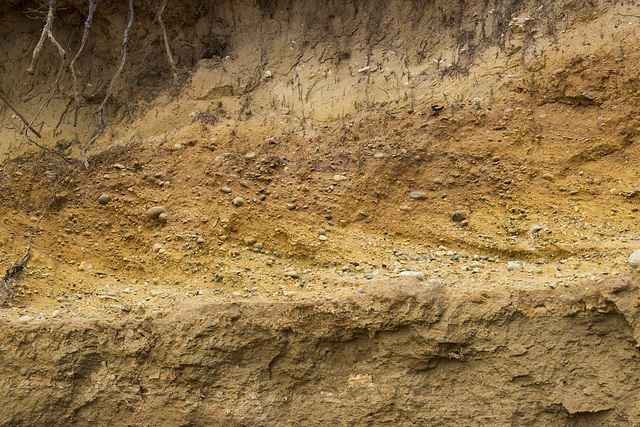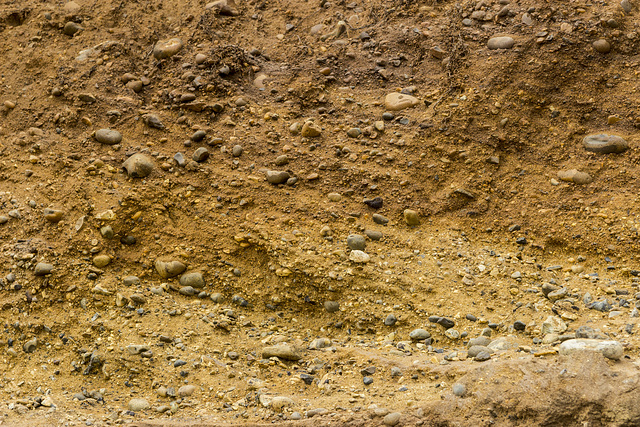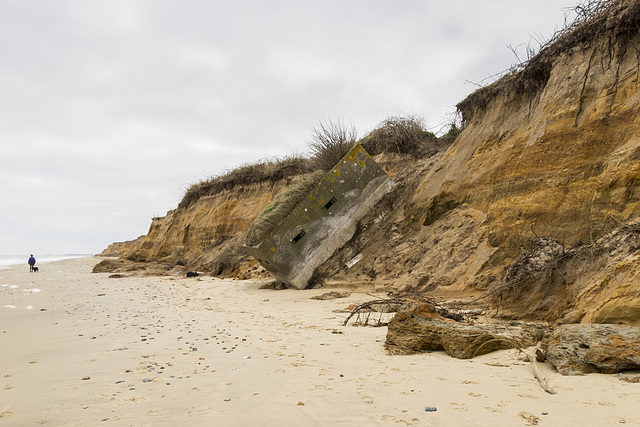
Benacre
Photos taken around Benacre on the Suffolk coast.
Looking towards Southwold from Benacre Cliffs
Benacre Cliffs, just north of Covehithe in Suffolk, are comprised of cross-bedded sands and gravels of the Westleton Formation, with beds of bioturbated clay; part of the Norwich Crag, early Pleistocene in age.
This stretch of coast line is currently experiencing the most active coastal erosion in the UK, with average loss rates of around 7 metres per year. The cliffs are only recently formed and are growing in height. The land behind the cliff line is a gentle hill, therefore as the sea eats into the cliff line causing it to retreat westwards into the hillside, so the top of the cliff gets higher.
Benacre Cliffs cross-bedded gravels 2
Cross-bedded sands and gravels underlain by bioturbated sandy clay. Westleton Formation; part of the Norwich Crag (early Pleistocene) at Benacre Cliffs, just north of Covehithe in Suffolk. Above the cross-bedded unit, blown sand merges into modern soil.
Benacre Cliffs cross-bedded gravels 1
Detail of cross-bedded sands and gravels of the Westleton Formation; part of the Norwich Crag (early Pleistocene) at Benacre Cliffs, just north of Covehithe in Suffolk.
Collapsed pill box at Benacre Cliffs
Benacre Cliffs, just north of Covehithe in Suffolk, are comprised of cross-bedded sands and gravels of the Westleton Formation, with beds of bioturbated clay; part of the Norwich Crag, early Pleistocene in age.
This stretch of coast line is currently experiencing the most active coastal erosion in the UK, with average loss rates of around 7 metres per year. The cliffs are only recently formed and are growing in height. The land behind the cliff line is a gentle hill, therefore as the sea eats into the cliff line causing it to retreat westwards into the hillside, so the top of the cliff gets higher. The collapsed WW2 pill-box illustrates the erosion process.
Benacre Cliffs - Westleton Formation
Benacre Cliffs, just north of Covehithe in Suffolk, are comprised of cross-bedded sands and gravels of the Westleton Formation, with beds of bioturbated clay; part of the Norwich Crag, early Pleistocene in age.
This stretch of coast line is currently experiencing the most active coastal erosion in the UK, with average loss rates of around 7 metres per year. The cliffs are only recently formed and are growing in height. The land behind the cliff line is a gentle hill, therefore as the sea eats into the cliff line causing it to retreat westwards into the hillside, so the top of the cliff gets higher.
Jump to top
RSS feed- Latest items - Subscribe to the latest items added to this album
- ipernity © 2007-2024
- Help & Contact
|
Club news
|
About ipernity
|
History |
ipernity Club & Prices |
Guide of good conduct
Donate | Group guidelines | Privacy policy | Terms of use | Statutes | In memoria -
Facebook
Twitter






